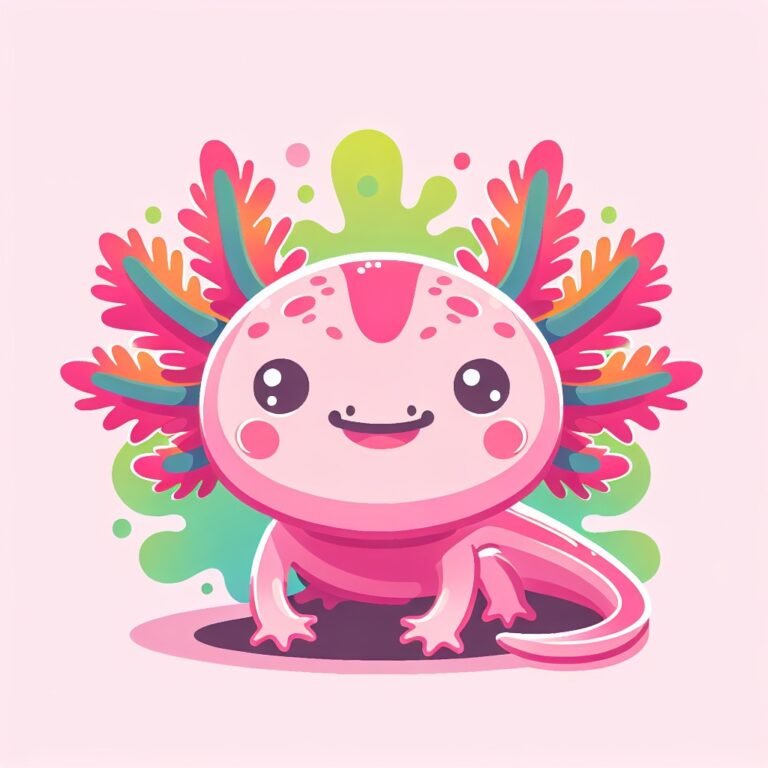Welcome to the exciting world of Axolotl Facts For Kids! In this engaging post, you will discover fascinating information about these unique amphibians that will captivate young minds and curious souls alike. From their incredible ability to regenerate body parts to their colorful variations, long lifespan, and endangered status, Axolotls are truly extraordinary creatures. Whether you’re a younger kid enchanted by their cute appearance or an older kid intrigued by their unique features, there is something for everyone to learn and appreciate about these captivating creatures. Join us on a fun and educational journey as we delve into the enchanting world of Axolotl facts that will leave you in awe of nature’s wonders.
Axolotl Facts For Kids
1. Axolotls Can Regenerate Their Body Parts

For younger kids: Axolotls can grow back their arms, legs, and even part of their brain!
For older kids: Axolotls possess the remarkable ability to regenerate lost or damaged body parts, including limbs, tails, and even portions of their brain.
Detailed explanation:Axolotls, also known as Mexican walking fish, are fascinating creatures that possess the unique ability to regenerate their body parts. This remarkable trait sets them apart from most other animals, making them a subject of great interest for scientists and nature enthusiasts alike.
When an axolotl loses a limb, organ, or even part of its brain, it has the remarkable ability to regrow the lost body part. This process, known as regeneration, involves the activation of dormant cells at the site of the injury, which then multiply and differentiate into the specific cell types needed to rebuild the missing tissue. This remarkable ability has captured the imagination of researchers who study regenerative medicine, as it offers valuable insights into the mechanisms that govern tissue regrowth in vertebrates.
Axolotls are able to regenerate not only external body parts such as limbs and tails, but also internal organs like their hearts and brains. This makes them a valuable model organism for studying regeneration and potential applications in human medicine. By understanding the cellular and molecular processes that drive axolotl regeneration, scientists hope to apply this knowledge to develop new therapies for treating injuries and diseases in humans.
In addition to their regenerative abilities, axolotls are also known for their unique appearance and behavior, making them popular pets and subjects of study. Their external gills, feathery appendages, and ability to breathe underwater through their skin make them stand out among amphibians. Overall, axolotls are truly remarkable creatures with a lot to teach us about the incredible possibilities of regeneration in the animal kingdom.
Axolotl Facts For Kids
2. Axolotls Never Undergo Metamorphosis
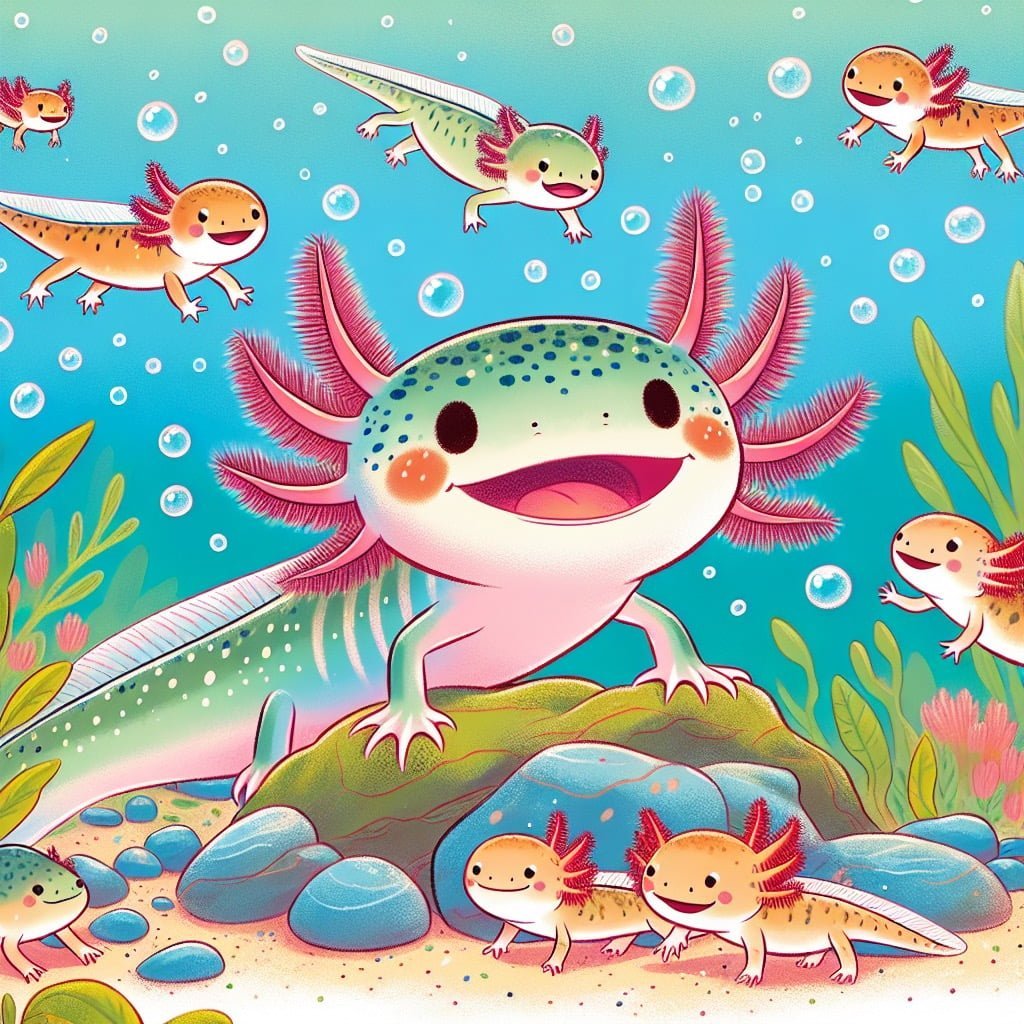
For younger kids: Axolotls stay as cute underwater babies forever!
For older kids: Unlike most amphibians, axolotls reach adulthood without transforming through metamorphosis, allowing them to retain their aquatic juvenile features throughout their lives.
Detailed explanation:Axolotls are fascinating creatures that never undergo metamorphosis, unlike other amphibians. This unique trait sets them apart from their distant relatives, such as frogs and salamanders. Metamorphosis is a biological process through which an organism undergoes a drastic change in its physical form as it matures from a juvenile to an adult. In the case of most amphibians, this involves a transition from an aquatic larval stage to a terrestrial adult stage.
However, axolotls remain in their aquatic larval form throughout their entire lives, retaining their gills and tadpole-like appearance. This phenomenon, known as neoteny, allows them to reach sexual maturity and reproduce without ever transitioning to a land-dwelling adult form. This unique adaptation has made axolotls the focus of scientific research and a popular choice for pet owners.
One of the reasons why axolotls never undergo metamorphosis is due to their natural habitat. Found exclusively in the ancient lake Xochimilco in Mexico, axolotls have evolved to thrive in the permanent aquatic environment of the lake. This lack of environmental pressure to transition to a terrestrial form has allowed axolotls to retain their larval characteristics.
The ability of axolotls to retain their juvenile features has also made them valuable subjects for medical research, as they possess the remarkable ability to regenerate limbs, organs, and even parts of their brain. This remarkable regenerative capacity has sparked interest in studying axolotls to unlock the secrets of tissue regeneration and potentially apply these findings to human medicine.
In conclusion, the fact that axolotls never undergo metamorphosis is a unique trait that sets them apart from other amphibians and has made them a captivating subject of study for scientists and nature enthusiasts alike.
Axolotl Facts For Kids
3. Axolotls Have External Gills
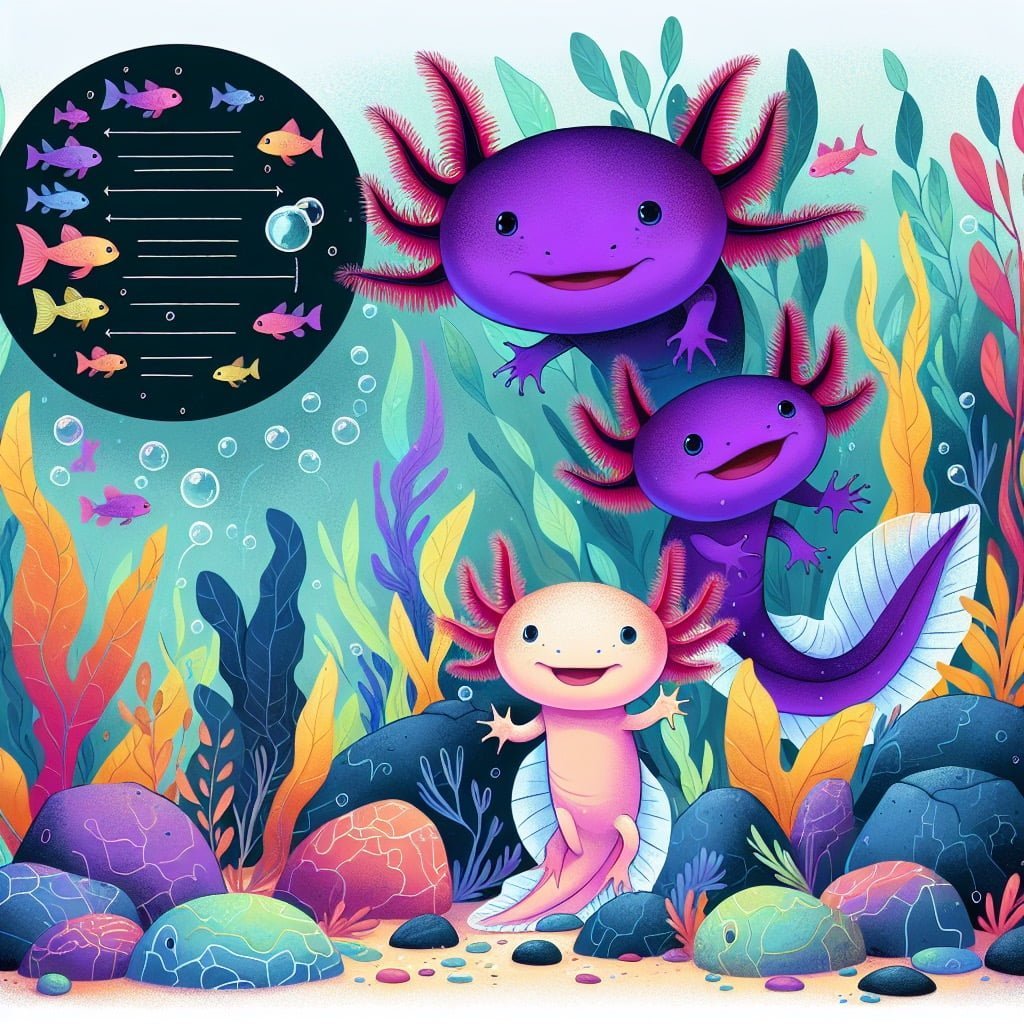
For younger kids: Axolotls have frilly gills that help them breathe underwater!
For older kids: Axolotls possess unique external gills on the sides of their heads that function similarly to fish gills, enabling them to extract oxygen from water.
Detailed explanation:Axolotls, a type of amphibian native to Mexico, are fascinating creatures that have captured the curiosity of both scientists and the general public. One of the most distinctive features of axolotls is their external gills, which set them apart from other amphibians. These gills resemble a feathery fringe on either side of the axolotl’s head and are used for respiration in their aquatic habitat.
The presence of external gills is a unique adaptation that allows axolotls to effectively extract oxygen from the water they live in. Unlike most other amphibians, which undergo metamorphosis and develop lungs for breathing air as adults, axolotls retain their gills throughout their lives. This enables them to remain in the water and continue to respire efficiently through their gills.
The external gills of axolotls also play a crucial role in their ability to regenerate. Axolotls are well-known for their remarkable regenerative abilities, being able to regrow lost limbs, organs, and even parts of their brain. The high rate of cell division and regrowth in axolotls is supported by the large surface area of their external gills, which provide ample oxygen to fuel the regenerative process.
In conclusion, the presence of external gills in axolotls is a fascinating adaptation that allows them to thrive in their aquatic environment and supports their incredible regenerative abilities. Studying axolotls and their unique features can provide valuable insights into both amphibian biology and regenerative medicine.
Axolotl Facts For Kids
4. Axolotls Come in Various Colors
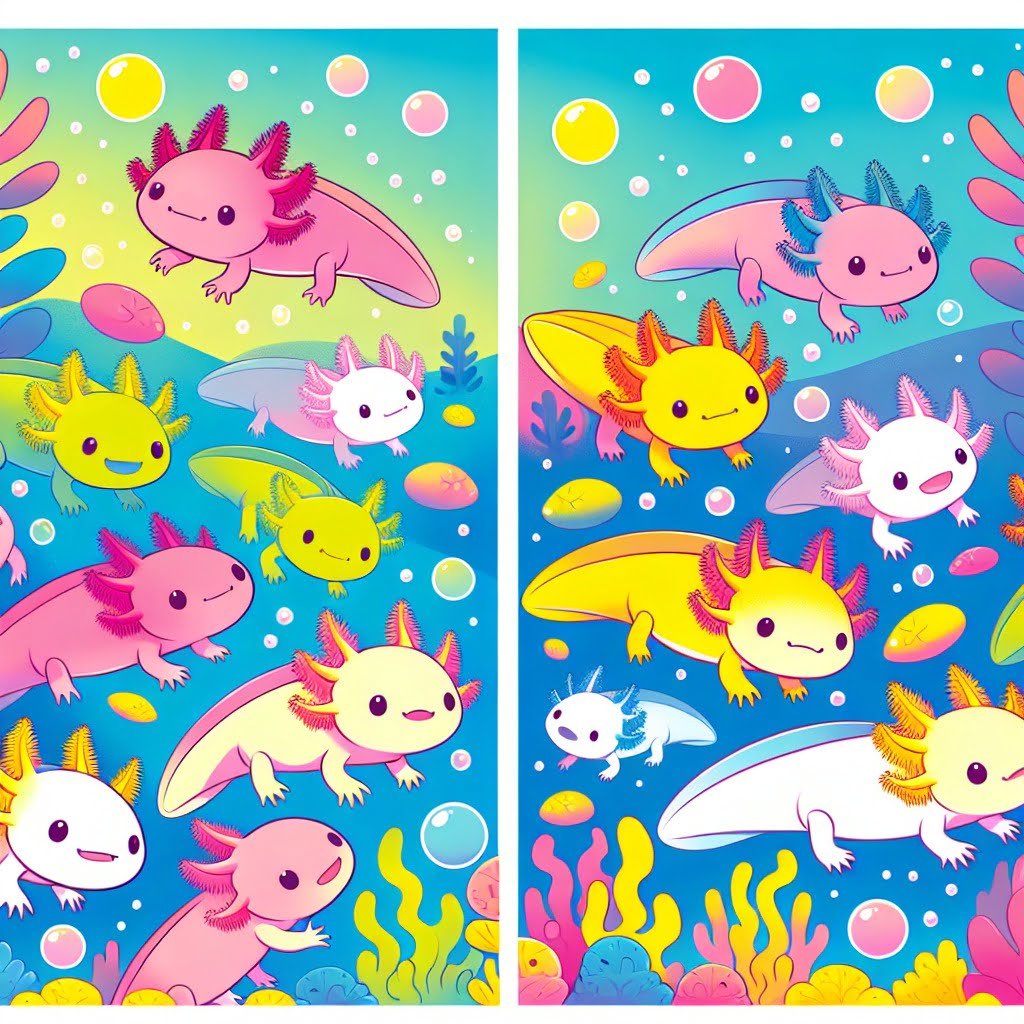
For younger kids: Axolotls can be pink, white, black, or spotted with different colors!
For older kids: Axolotls display a wide range of colors, including pink, white, black, golden, and even albino, with some individuals showcasing beautiful patterns and variations.
Detailed explanation:Axolotls, also known as Mexican salamanders, are a fascinating creature that have captured the attention of both scientists and the general public. One of the most intriguing aspects of axolotls is the fact that they come in various colors. While the most common coloration is a mottled shade of brown with specks of black, these unique amphibians can also be found in shades of white, pink, gold, and even black.
The diverse range of colors exhibited by axolotls is due to a combination of genetics and environmental factors. In the wild, axolotls can blend into their surroundings based on their color, helping them evade predators and catch prey more efficiently. In captivity, breeders have selectively bred axolotls to bring out specific color traits, resulting in a wide array of vibrant hues.
The ability of axolotls to come in various colors is not only aesthetically pleasing, but it also serves an important scientific purpose. By studying the genetics behind color variations in axolotls, researchers can gain insights into gene expression, development, and evolution. This information can be invaluable in understanding not only how colors are produced in axolotls, but also how similar processes occur in other organisms, including humans.
Overall, the fact that axolotls come in various colors showcases the incredible diversity and adaptability of these amphibians. Whether they are white, pink, gold, or black, each axolotl is a unique and beautiful example of the wonders of nature.
Axolotl Facts For Kids
5. Axolotls Have Long Lives
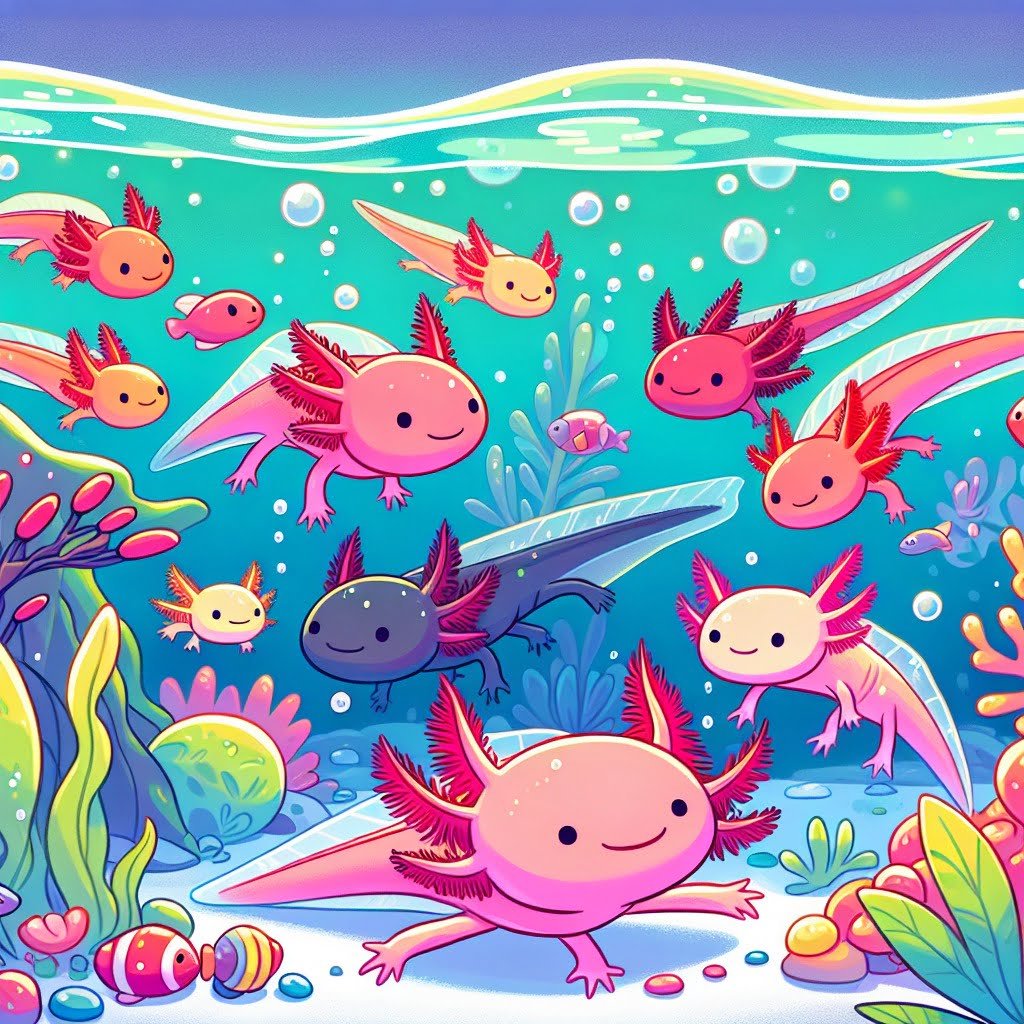
For younger kids: Axolotls can live for many years, even up to 15 years!
For older kids: Axolotls are long-lived creatures, with some individuals reaching up to 15 years or more in captivity, making them fascinating pets with a significant lifespan.
Detailed explanation:Axolotls, fascinating creatures native to Mexico, have captured the curiosity of many due to their remarkable abilities and unique characteristics. One intriguing fact about axolotls is their long lifespan, making them popular pets for those interested in caring for these amphibians for an extended period of time.
Axolotls have the ability to regenerate lost body parts, a phenomenon known as neoteny, which allows them to heal quickly and potentially live longer than other amphibian species. In the wild, axolotls have been known to live up to 15 years, while in captivity they can live even longer with proper care and a suitable environment.
One of the reasons for their longevity is their slow rate of metabolism, which means they do not require as much food as other animals of similar size. However, it is important to provide them with a diet rich in nutrients to ensure they remain healthy and vibrant throughout their lives.
In addition to their long lifespan, axolotls are also known for their unique appearance, with their external gills and feathery-like structures adorning their bodies. They are often referred to as the “Mexican walking fish” due to their ability to walk along the bottom of bodies of water using their four legs.
Overall, axolotls are truly fascinating creatures with a long lifespan that make them a popular choice for those looking to keep them as pets. With proper care and attention, these amphibians can live for many years, providing endless opportunities for observation and appreciation of their intriguing behaviors and characteristics.
Axolotl Facts For Kids
6. Axolotls Have Poor Eyesight
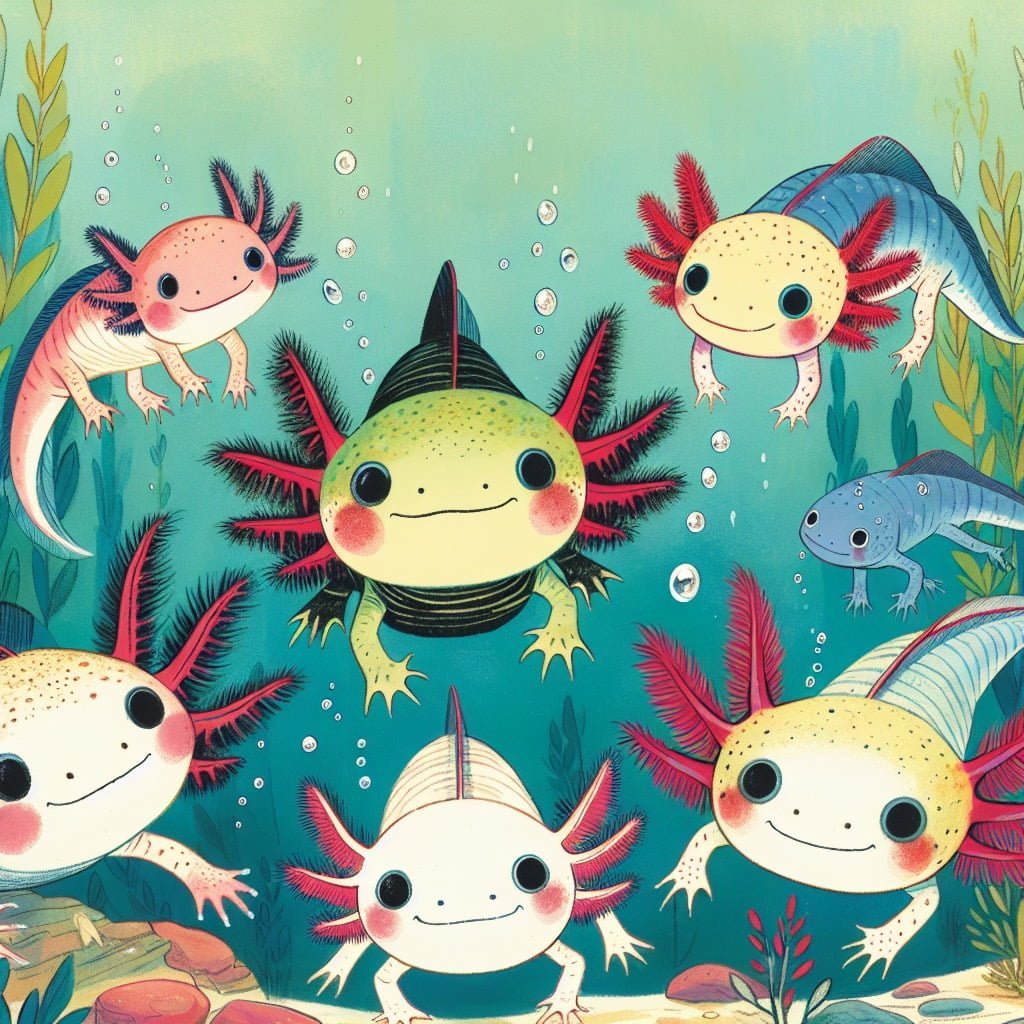
For younger kids: Axolotls rely more on their sense of smell and touch because they can’t see very well.
For older kids: Axolotls have limited vision, with their eyes primarily detecting light and movement; instead, these amphibians heavily rely on their acute sense of smell and touch to navigate their environment.
Detailed explanation:Axolotls, fascinating creatures native to Mexico, are known for their unique characteristics and interesting behaviors. One such fact about axolotls is that they have poor eyesight, making them rely heavily on their other senses such as smell and touch to navigate their environment. This adaptation is believed to be due to the fact that axolotls are primarily nocturnal animals, meaning they are more active during the night when their vision is less crucial.
Despite their poor eyesight, axolotls have developed other ways to compensate for this limitation. One interesting adaptation is their ability to detect subtle changes in water pressure, allowing them to sense movement and locate prey even in low visibility conditions. Additionally, axolotls have a specialized lateral line system, which is a series of sensory organs along their bodies that can detect changes in water flow and vibrations, aiding them in hunting and avoiding predators.
It is important for kids to understand the unique characteristics of axolotls, as they can serve as a valuable lesson in adaptation and survival in different environments. By learning about how axolotls have evolved to thrive despite their poor eyesight, children can gain a greater appreciation for the diverse range of strategies that animals use to navigate their surroundings and ensure their survival. Overall, axolotls serve as a fascinating example of the incredible diversity of the natural world and the amazing ways in which animals have adapted to their environments.
Axolotl Facts For Kids
7. Axolotls Are Native to Mexico
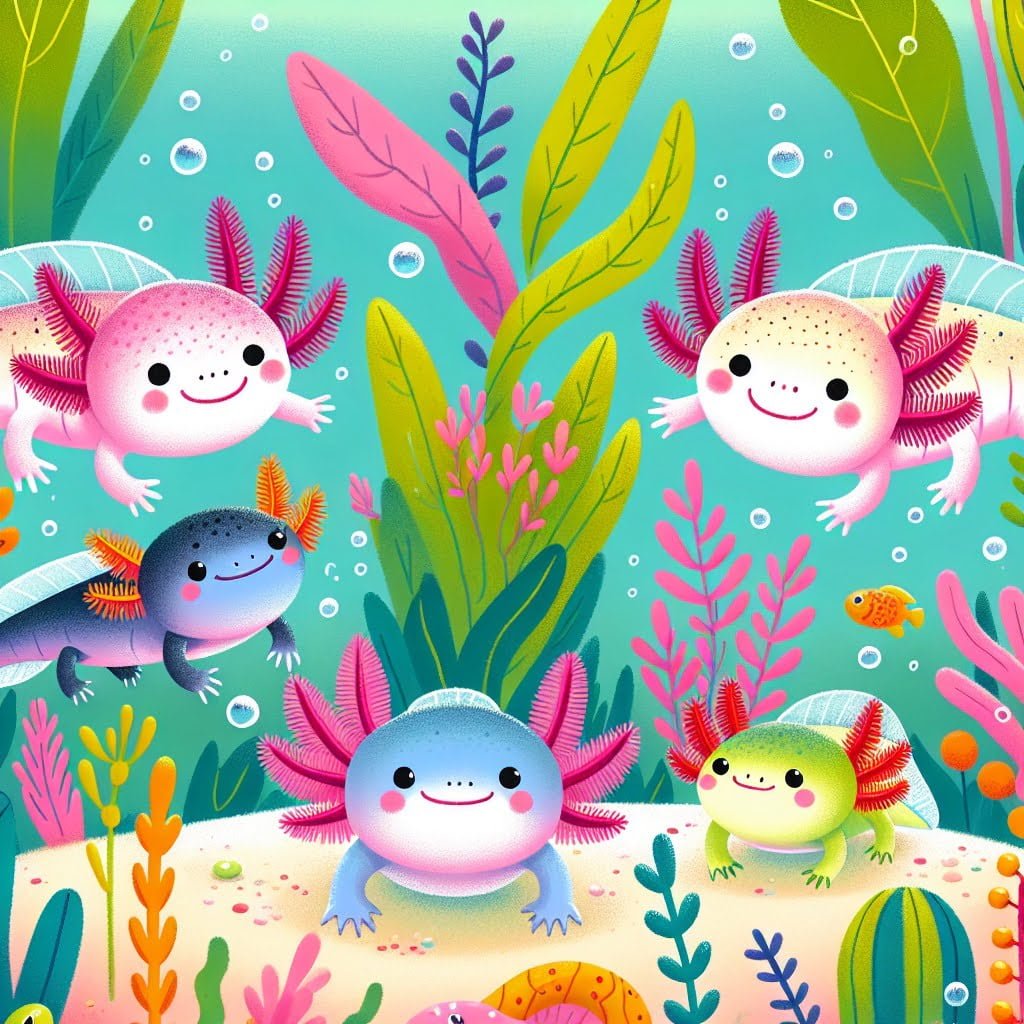
For younger kids: Axolotls originally come from Mexico where they live in freshwater lakes.
For older kids: Native to the ancient waterways of Mexico, axolotls are typically found in freshwater bodies like Lake Xochimilco, showcasing their unique habitat preferences within the region.
Detailed explanation:Axolotls, also known as Mexican walking fish, are fascinating creatures that originate from Mexico. These unique salamanders have become quite popular as pets due to their unusual appearance and regenerative abilities. Axolotls are fully aquatic animals, spending their entire lives in water, unlike other amphibians such as frogs or toads.
One of the most remarkable Axolotl Facts For Kids is their ability to regenerate lost body parts. This means that if an axolotl loses a limb or even part of its brain, it can regrow the missing tissue perfectly. This incredible regenerative ability has captured the interest of scientists for years, as studying axolotls could potentially lead to breakthroughs in the field of regenerative medicine.
In their natural habitat in Mexico, Axolotls can be found in freshwater lakes and canals. Unfortunately, due to habitat destruction and pollution, wild axolotl populations have been declining rapidly in recent years. Conservation efforts are being made to protect these unique creatures and their habitats.
For kids who are interested in learning more about axolotls, it is important to understand the specific care requirements they have as pets. Axolotls need a large tank with clean, cold water and plenty of hiding spots to feel secure. They primarily feed on live foods such as worms and small fish.
In conclusion, Axolotls are fascinating creatures native to Mexico with incredible regenerative abilities. By educating kids about these unique animals, we can help promote conservation efforts and ensure the continued survival of the axolotl species.
Axolotl Facts For Kids
8. Axolotls Can Respire Through Their Skin
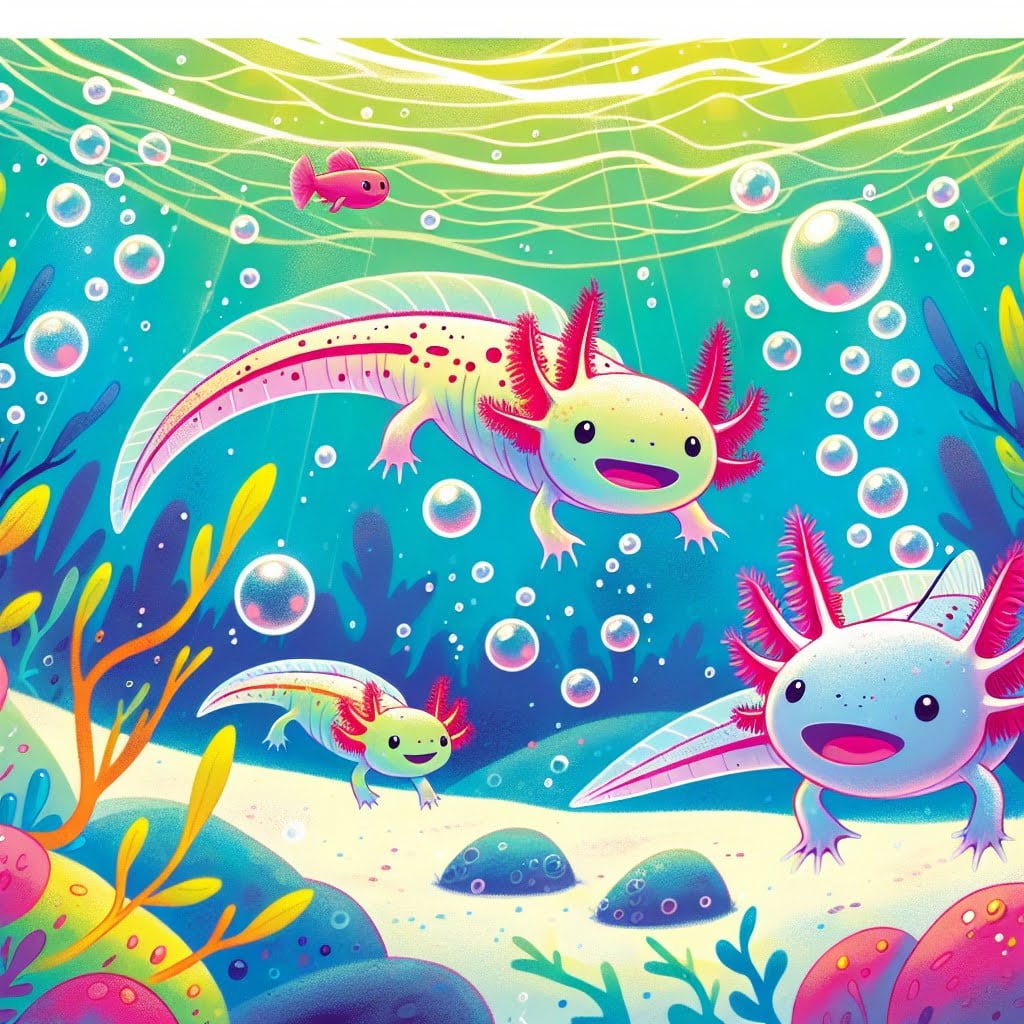
For younger kids: Axolotls can breathe by absorbing oxygen through their skin while swimming!
For older kids: Apart from using their gills, axolotls also engage in cutaneous respiration, absorbing oxygen and releasing carbon dioxide directly through their skin, particularly when in oxygen-rich waters.
Detailed explanation:Axolotls, fascinating creatures native to Mexico, have the unique ability to respire through their skin, which sets them apart from many other amphibians. This means that axolotls are capable of absorbing oxygen directly from the water through their skin, in addition to breathing through their gills like other aquatic animals. This adaptation allows them to efficiently extract oxygen from their environment, making them well-suited for their underwater lifestyle.
This remarkable feature of axolotls is particularly interesting for kids, as it showcases the diverse ways in which different animals have evolved to survive in their specific habitats. By being able to respire through their skin, axolotls are able to thrive in oxygen-rich aquatic environments, where they can absorb the necessary oxygen directly from the water around them. This is a crucial adaptation for their survival, as it provides them with a constant source of oxygen to fuel their metabolism and sustain their bodily functions.
Moreover, the ability of axolotls to respire through their skin is also a key factor in their popularity as exotic pets. Kids are often fascinated by the idea of a salamander-like creature that can “breathe” through its skin, adding to the appeal of owning an axolotl as a pet. This fact can serve as a valuable educational tool for parents and teachers looking to engage children in learning about the remarkable adaptations of different species in the animal kingdom.
Axolotl Facts For Kids
9. Axolotls Are Carnivorous Eaters

For younger kids: Axolotls love to eat small animals like worms, insects, and small fish!
For older kids: Axolotls are carnivorous predators, primarily feeding on small aquatic creatures like worms, insects, tadpoles, and small fish, using their sharp teeth to grasp and consume prey efficiently.
Detailed explanation:Axolotls, also known as Mexican salamanders, are fascinating creatures that are popular among kids and adults alike for their unique characteristics. One interesting fact about axolotls is that they are carnivorous eaters, meaning that they primarily consume other animals in order to obtain the nutrients they need to survive.
In the wild, axolotls feed on a variety of small prey items such as insects, worms, crustaceans, and small fish. They are opportunistic feeders, meaning that they will eat whatever is available to them in their environment. In captivity, axolotls are typically fed a diet of live or frozen foods such as bloodworms, brine shrimp, and small fish. It is important for axolotl owners to provide their pets with a varied diet in order to ensure that they are receiving all of the necessary nutrients they need to stay healthy.
One of the reasons why axolotls are such successful predators is because of their specialized feeding mechanism. They have a wide mouth and sharp teeth that allow them to efficiently capture and consume their prey. Additionally, axolotls have excellent eyesight and can detect movement in the water, making it easier for them to locate and catch their food.
In conclusion, axolotls are fascinating creatures that are carnivorous eaters, meaning that they rely on a diet of meat in order to survive. By understanding the unique feeding habits of axolotls, we can better care for these remarkable animals and ensure that they thrive in their environments.
Axolotl Facts For Kids
10. Axolotls Are Critically Endangered in the Wild
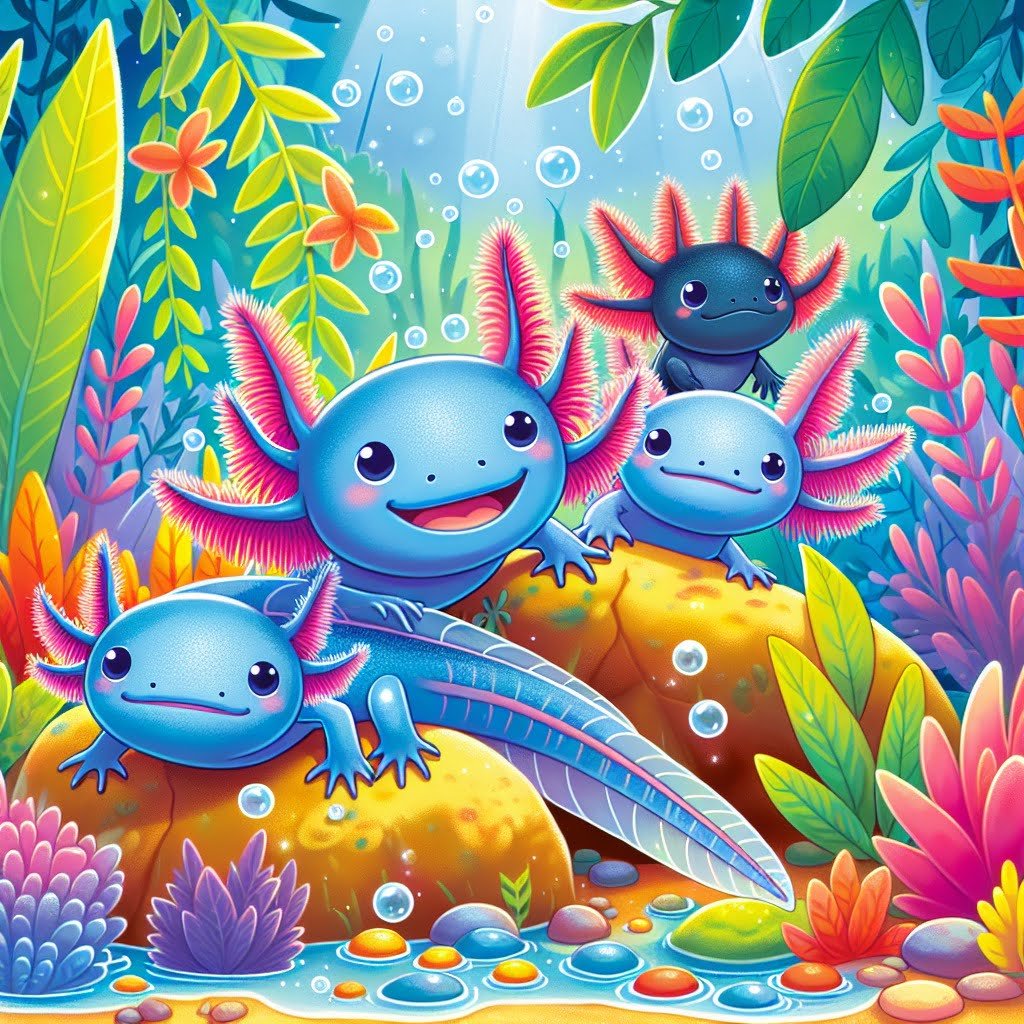
For younger kids: Sadly, axolotls are struggling to survive in their natural homes.
For older kids: Due to habitat loss, pollution, and invasive species, wild axolotls in Mexico, particularly in Lake Xochimilco, are critically endangered, highlighting the urgent need for conservation efforts to protect this unique species.
Detailed explanation:Axolotls, also known as Mexican salamanders, are fascinating creatures that have captured the hearts of many animal enthusiasts, especially children. However, despite their popularity as pets and in scientific research, axolotls are facing a grave threat in the wild – they are critically endangered. This means that their populations in their natural habitats are rapidly declining, putting them at risk of extinction.
There are several reasons why axolotls are in danger of disappearing from the wild. One major threat to their survival is habitat destruction. Axolotls are native to the lake complex of Xochimilco in Mexico City, but rapid urbanization and pollution have severely impacted the water quality and aquatic vegetation essential for their survival. As a result, axolotls are finding it increasingly difficult to find suitable food sources and breeding grounds.
In addition to habitat destruction, another significant factor contributing to the decline of axolotl populations is the illegal pet trade. Due to their unique appearance and popularity as pets, axolotls are often captured from the wild and sold on the black market. This not only disrupts wild populations but also puts additional pressure on already vulnerable individuals.
Conservation efforts are crucial in order to save axolotls from extinction in the wild. Initiatives such as habitat restoration, pollution control, and breeding programs are essential to protect these amazing creatures for future generations of kids to enjoy. By educating the public, particularly children, about the importance of preserving axolotls and their habitats, we can work together to ensure that these fascinating animals continue to thrive in the wild for years to come.
Did you know?
Did you know that axolotls are sometimes referred to as “Mexican walking fish” even though they are not fish at all?
Summary of Axolotl Facts For Kids
Are you curious about fascinating creatures that can regenerate body parts, never undergo metamorphosis, and have external gills? Look no further than the incredible axolotl! In this engaging blog post, we explore ten intriguing facts about these aquatic salamanders that will captivate kids of all ages. From their colorful appearances and long lifespans to their unique abilities such as breathing through their skin and carnivorous eating habits, there is so much to learn about these captivating creatures. Discover why axolotls are not only amazing pets but also critically endangered in the wild, making it crucial to raise awareness and support conservation efforts. Dive into the world of axolotls and unlock the wonders of these remarkable amphibians!
Sources and additional information for Axolotl Facts For Kids
WikipediaBritannicaSan Diego Zoo KidsThe Smithsonian InstitutionDK Find Out!Australian MuseumWorld Wildlife FundThe Nature ConservancyAnimal PlanetMonterey Bay AquariumPBS NatureSmithsonian’s National Zoo & Conservation Biology InstituteWorld Wildlife FundAnimal Diversity Web (University of Michigan)IUCN Red List of Threatened SpeciesThe Cornell Lab of Ornithology – All About BirdsNational Audubon SocietyEncyclopedia of LifeSeaWorld Parks & EntertainmentAustralian Museum – AnimalsEncyclopedia of Life
